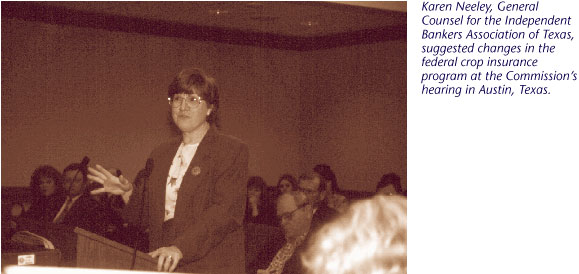|
|
||
| Return to Table of Contents | ||
|
|
||
Relief. Many comments we received recognized the importance of moving away from the traditional approach to drought that is driven by emergency relief to a new approach that emphasizes planning and proactive mitigation. At the same time, we were cautioned that it will take time to provide the training and technical assistance needed to help farmers, ranchers, local businesses, communities, states, and tribes make this transition. A safety net is needed, we were told, to help overcome the impacts of extreme occurrences of drought or the impacts of multi-faceted disasters (for example, flood/drought or hail/drought). Approximately 47 federal
programs have an element of drought-related relief, primarily for
agricultural droughts. The U.S. Department of Agriculture, for example,
follows a "bottom up" procedure for emergency disaster
designations, but the Commission recognizes that the process needs to be
streamlined. In every county in the nation, there is a County Emergency
Board consisting of a representative from each of the five Department of
Agriculture agencies that |
||
|
|
||

